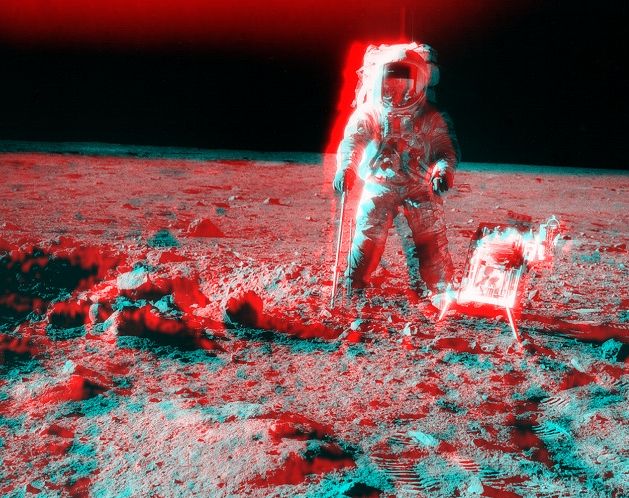The stereo pair of images seen below is commonly known as a wigglegram. Wigglegrams are animated images that create a 3D effect by displaying two (or more) images in a looping sequence. In the example below, the two images were taken with one camera, the astronaut photographer moving sideways by the distance separating a pair of human eyes between shots. This is not the most precise technique, but the photographer was on the Moon at the time and probably had many other things to consider! The two images therefore represent the views seen by the left and right eyes respectively.
|
|
| Images courtesy of NASA |
Most wigglegrams use only two images, but this leads to a very jerky display as seen here. A smoother display can be achieved by incorporating additional intermediate images, using some sort of synthesized motion blur or a faster frame rate.
Advantages of wigglegrams include:
- The elimination of 3D glasses or other viewing equipment;
- The effect is easily appreciated by most people - more so than in the cases of parallel or cross-eyed viewing;
- It is usable by people who view the world through only one eye.
Disadvantages include:
- The technique cannot be used for print;
- It is difficult to perceive image detail due to movement;
- True binocular stereoscopic depth perception is not provided.
The anaglyph image produced by a combination of same two images is shown below.
|
|
| Image by courtesy of NASA |







